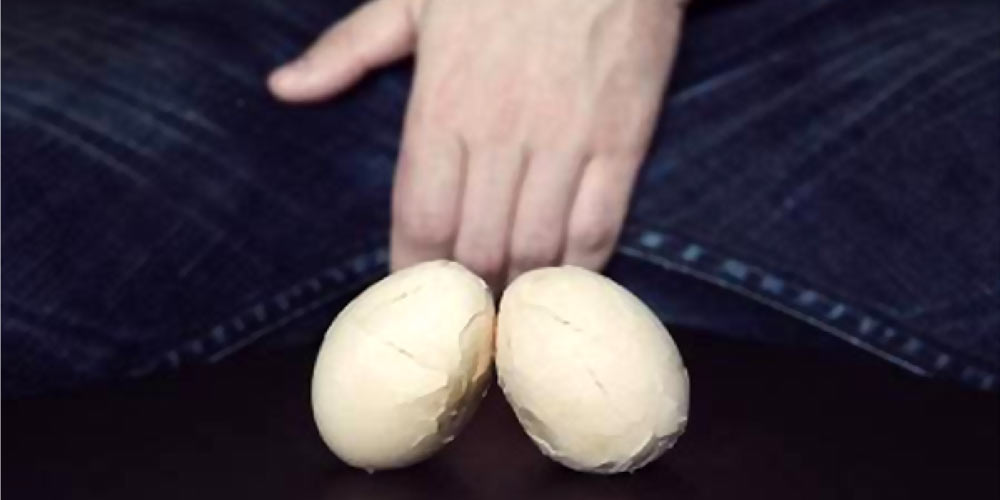
A hydrocele is a troublesome condition in males. In hydroceles, the sac around the testis gets filled with fluid. Due to this fluid accumulation, the scrotum gets swollen and appears enlarged.
Hydroceles are very common in baby boys. It is estimated that 1 out of every 10 baby boys have the condition of hydroceles. In infants, hydroceles develop as a result of some abnormality in the development of the scrotal region. Mostly, the hydrocele goes away on its own within 12-18 months after birth.
In adults, however, the condition of hydroceles is less common. The major causes of hydrocele development in adults include injury, inflammation, tumors, blockage of the spermatic cord, infections, etc.
Table of Contents
Signs of Hydrocele
The condition of hydrocele usually starts with a minimal pain swelling in the scrotum. Although the lump is minimal pain, the enlargement of the scrotum may cause heaviness and discomfort. Also, in some cases, along with the swelling in the scrotum, inflammation in the epididymis is also present. In these cases, you may experience severe pain and itching in the scrotal area.
A hydrocele is quite a discomforting situation. It can hinder your normal routine life. Moreover, it can also become a reason for embarrassment for some men.
Hydroceles are usually harmless and do not pose any risk to the testis. However, if hydroceles are left untreated for a long time, serious complications can arise.
Let’s look at some of the complications that can arise due to untreated hydroceles.

Rupture of the hydrocele
Over time, the volume of fluid accumulated in the scrotum increases. Large volumes of fluid can lead to excess pressure on the scrotum and can lead to the rupture of the hydrocele. This is one of the common complications of hydrocele.
Formation of Haematocele
Any injury or trauma to the scrotal region can lead to spontaneous bleeding into the sac. Due to this, a hematocele (swelling due to a blood-filled cavity) may be formed. If the hematocele is not drained, clotting may occur. This complication of a hydrocele can get really severe and needs proper medical attention.
Infections and Pyocele
If the fluid present in the scrotum gets infected, Pyocele can occur. Pyoceles are characterized by the accumulation of purulent fluids in the scrotum. Pyocele is a complication of a hydrocele that needs emergency treatment otherwise permanent damage can occur.
Risk of Fournier’s Gangrene:
Hydrocele can act as a risk factor for Fournier’s gangrene. Fournier’s gangrene is a painful condition and can cause the death of tissues in the region. It can even have life-threatening effects in some cases. This one is a rare complication of hydrocele.
Sexual Dysfunction:
Hydrocele can be a cause of sexual dysfunction in many cases. It is the most common complication of hydrocele. Hydrocele can have negative effects on spermatogenesis and sperm quality can reduce. The water trapped in the hydrocele sac can lead to increased temperature of the scrotum. Studies have shown that with every 1 °C rise of the scrotal temperature, the semen quality decreases by 40 percent.
Permanent damage to the testis:
Any injury to the scrotum can lead to excess pressure on the testis and the testis may get twisted (testicular torsion). This is a very painful and complicated condition of a hydrocele that needs immediate medical attention.. If you experience hardening of the hydrocele, it can be a sign of testicular torsion and if not treated properly, it can cause permanent damage to the testis.
Testicular atrophy and male infertility:
Large hydroceles can often obstruct the blood flow to the testis. This can cause testicular atrophy and eventually lead to infertility in men.
You must have understood by now that hydroceles if left untreated, can lead to some very serious complications.
Prevention is always better than cure. So you need to maintain a proactive approach and get proper and timely treatment for hydroceles.
It is better to consult a specialist doctor as soon as the symptoms of hydrocele start to appear. This will help prevent the worsening of the condition and will help reduce the chances of complications.
Treat hydrocele on time
So, if you are suffering from hydrocele, you should get it treated in time. Also, while choosing the treatment for hydroceles, you should make a well-informed decision.
You should be aware of the pros and cons of each treatment option so that you can avoid postoperative complications
In the conventional treatment of hydroceles, open surgery is performed which involves incisions and stitches to the groin or scrotum area. Open surgery can be a little discomforting and there is a high chance of infections and complications after the procedure. (Also Read: Surgeries for hydrocele)
Laser Hydrocelectomy- Best Treatment for Hydroceles
The best and most advanced treatment available for hydroceles is Laser Hydrocelectomy. Hydrocelectomy is a permanent treatment for hydroceles, irrespective of the method used, laser or open.
The laser-assisted procedure makes use of a high-intensity laser beam for the drainage of the fluid. The hydrocele sac is also removed to prevent the recurrence of hydrocele. Laser Hydrocelectomy inflicts minimal pain and the recovery after the procedure is fast. There is no risk of postoperative complications.
If you are experiencing the troubles of hydrocele and are looking for an effective treatment to prevent its complications, hydrocelectomy is the only plausible solution.
You can get in touch with Pristyn Care to undergo hydrocelectomy under the care of expert urologists.
Also Read:







